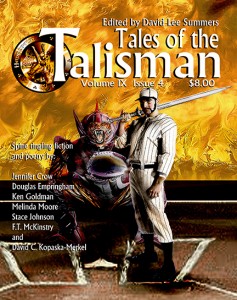I read poetry tonight at Coffee on the Lowell. The event had a modest turnout, though from what I understand, it was better than the last meeting. I didn’t think it was too bad for only their third outing. I did find out, however, that I listed the cross streets incorrectly on the West Side Books website. Coffee on the Lowell is at the corner of 50th and Lowell (or Regis and Lowell, depending on how you look at it) but I had listed it as 58th and Lowell on the website. It’s fixed now.
Ira Slotkin hosted the open mic, and Seth from the Mercury Cafe Jam Before the Slam was there as well. Zach, a counterpart of Seth’s, accompanied many of the poems on keyboard. (Sorry I didn’t get all the names, guys. I’ll get them next time.) Ira read several of his Spam haiku, the humor highlight of the evening. One woman read for the first time — and read well — choosing Wordsworth as her initiation. Another woman, a friend, read a poem that she said “scared her.” I can see why, after hearing it. It was disturbingly effective, and I think it took guts for her to air it. I read a few of my own poems, and closed with Hopkins’ “(Carrion Comfort).”
Afterward, I was finally able to deliver a critique of a story for my friend, the “scared poem” woman. I’ve had the critique for months, and have been wanting to get it to her, but our schedules haven’t allowed it until tonight. She appreciated the critique, despite all the green pen marks on it.
As for my own writing, I jotted down few more paragraphs of “Chesterfield Gray” at lunch. I hope to finish the story’s first draft Sunday and revise it the same day. I noticed that the new Writers of the Future Vol. XVIII is out, and Kim bought it for me as another early birthday present. (Thanks, Babe.) I’m officially getting behind. I still haven’t read last year’s volume, and I still have to read the second Harry Potter book and re-read The Two Towers before those movies come out.
I want to rant a bit about a couple of news stories that came to my attention. The first is fairly minor; it has to do with the lawsuit settlement between John Cage’s estate and a British composer name Mike Batt. The upshot is that Batt included a piece called A One Minute Silence on a CD by his band, The Planets. Cage is famous for his avant-garde piece 4′ 33″, a four minute, thirty-three second piece of silence which Cage used to perform live by sitting and looking at his piano as the audience fidgeted. Cage’s estate sued Batt for plagiarism, which seems ludicrous until you learn that Batt credited the piece to “Batt/Cage” on the CD. Oops. I’m guessing that if he hadn’t credited Cage as a collaborator, he would not have been hit with a lawsuit. Then again, he knew the piece was inspired by Cage, and acknowledged that. For that, he has to pay a six-figure sum to the John Cage Trust? Isn’t this a bit out of hand?
Speaking of “out of hand,” let’s talk about Randy Moss and the NFL. Specifically, let’s talk about Randy Moss getting his wrist slapped. This is a man who, intentionally and methodically, pushed a traffic officer half a block with the nose of his Lexus. He was charged with two misdemeanors, for which he will only be fined a maximum of $2000 by law. He is not likely to spend any more jail time because of the nature of his occupation and because of his celebrity status. The NFL has not suspended Moss for his actions, though he will be up for evaluation after his arraignment on October 2nd.
Compare this to the NFL’s denial of Peyton Manning’s request to wear black hightop shoes in tribute to Johnny Unitas. Manning is quarterback of the same team that Unitas helmed (or at least the team with the same name) and most of the news that I’ve read states that people in general think this was a classy move by Manning. However, the NFL denied the request, saying that if Manning wore the hightops, he could face up to a $25,000 fine.
One man commits a near-felony (some say it should have been a full-blown felony) and will probably get away with a slap on the wrist. Another asks if he can break uniform dress code — not breaking any laws, mind you, just a dress code rule — to pay tribute to one of his heroes, and is told that he will get a large fine if he does so. He decides not to, in order to keep from creating a distraction for his team. This says volumes, not only about the NFL’s priorities, but about the differences between how Peyton Manning and Randy Moss look at their positions on their respective teams.

